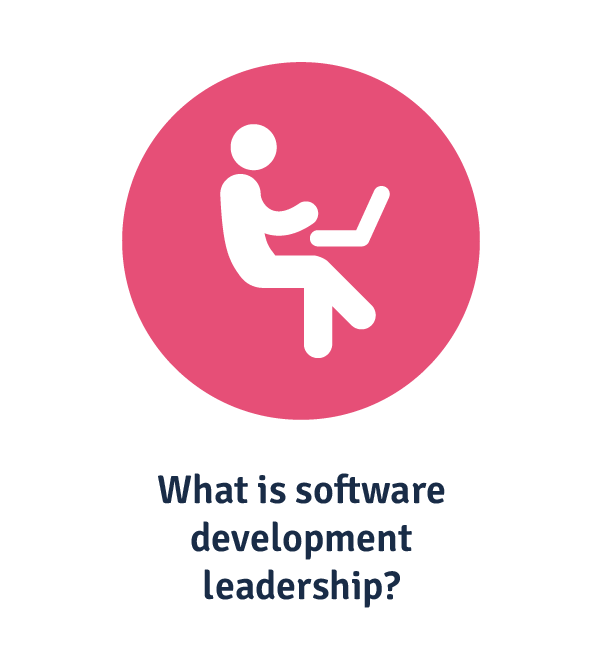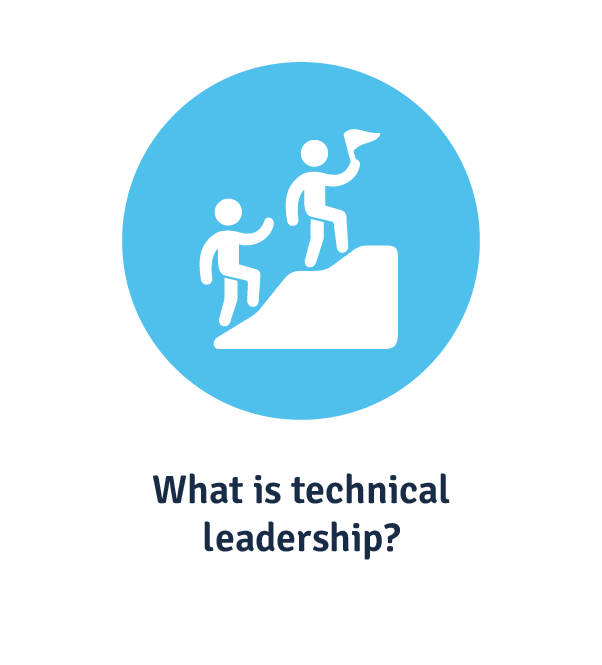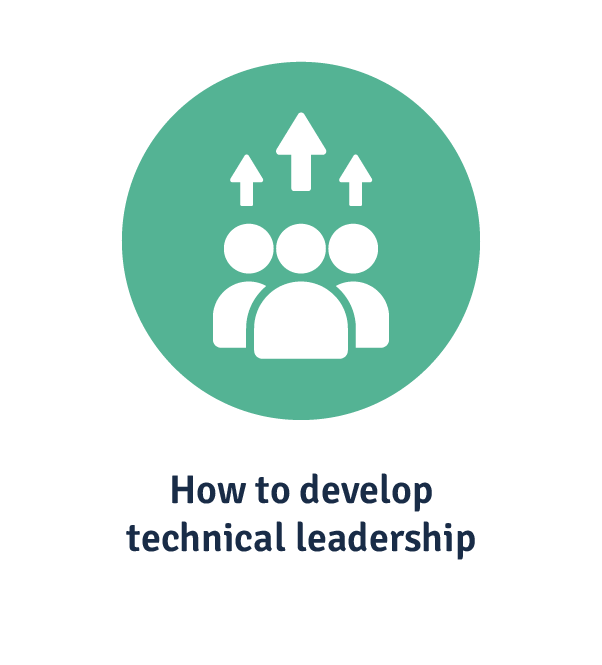Business relies on technology more than ever as the foundation for how work gets done. But the technological landscape changes fast—making skilled developer leadership more important than ever.
However, technical skills only get an emerging tech leader so far. They have to act as project managers, emotional labourers, user advocates, business strategists and subject matter experts to address technical challenges, meet organisational outcomes and drive productivity.
It’s a lot to unpack, so let’s get into it.
What is software development leadership?
Developer leadership is the process of managing a software development team. A developer team leader is accountable for speed of progress, quality assurance, project execution, and team culture and development.
What is technical leadership?
Technical leadership involves overseeing a technical team, usually comprising software engineers and developers, within a software company.
While similar to developer leadership, a technical team lead generally manages a broader range of technical expertise.
Technical lead responsibilities
It’s a bit of jump from individual contributor team player to team leader. Technical team leads are responsible for:
- Prioritising high-leverage tasks in line with business needs
- Technically guiding their whole team with authority
- Directing architecture discussions
- Ensuring best-in-field technologies are used; consistently researching emerging tech to implement
- Efficiently managing IT budget
- Liaising with various stakeholders
- Managing project requirements and timelines for operational excellence
- Identifying risks and utilising risk management plans
- Fostering collaboration and consensus but providing constructive criticism where necessary
- Nurturing personal and professional development of direct reports
- Motivating and influencing team members.
Why is technical leadership important?
Reliance on technology such as cloud services is only growing. That’s before you add in the people required to develop and/or service that tech, keep abreast of industry changes and optimise speed, resources and output.
Technical leaders have a notoriously challenging job that must balance high business aspirations with realistic planning and fast-changing technology.
In their 2021 Pulse of the Profession report, the Project Management Institute found only 59% of IT projects are completed on time, 33% experience derailing scope creep and 11% are deemed failures. Even if that’s only one in 10 wasted projects, that’s still 10% of your budget, resources, and employee time wasted. In 2023, 51% of respondents to a KPMG survey said they’d found no ROI for digital investments, lacking the right people in the right roles or teams to get work done.
Having someone to unify strategy and processes isn’t just about project management. It’s about circumventing the cultural and systemic influences that can lead software development teams astray. That’s scenarios like:
- Teams start building without a business need or customer pain point.
- Scope is defined upfront and is inflexible for the entirety of the project.
- There is no strategy for execution.
- There is little input from other teams or team leaders in problem scoping.
- Other teams start to stick their hands in the pot after development has begun.
- Solutions are seen as silver bullets.
- Priorities are governed by individuals rather than determined by the entire team.
- There is no project champion.
Organisations who invest in developing technical leaders—skilled in people management as much as software development and engineering—are able to avoid the tech waste heap.
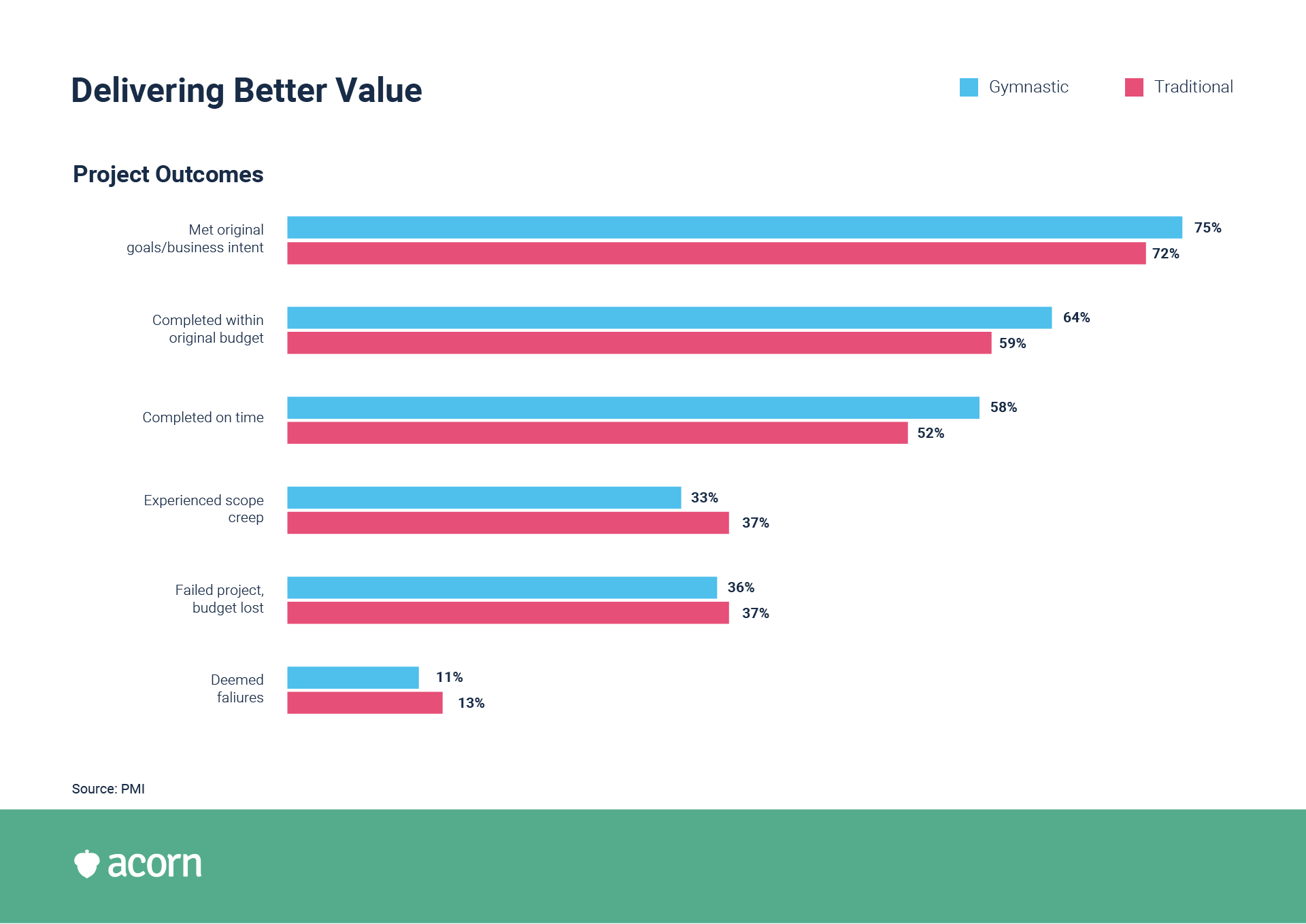
Technical leadership that drives innovation and agility through influence and collaboration are more likely to lead their organisations through volatile, uncertain, complex and ambiguous economic times.
We created the performance learning managment system (PLMS) to streamline and enable leadership development that creates impact players in key roles. For time-poor technical leaders, that looks like curated pathways that guide them to master the specific capabilities needed for job mastery and organisational success. To help with fast knowledge transfer within their teams, they can also create shareable learning assets from key interactions (e.g. common bug fixes) that live as content within the system.
How do you successfully develop technical leadership?
Alas, technical leaders are rarely born. But they can be shaped.
A successful leadership development plan for developers uses the same principles as other leadership development programs. The key is to:
- Address the capability and process-based problems developers actually face
- Create a learning culture that encourages collaboration and knowledge sharing
- Provide training that reflects technology’s close ties with other business functions.
Define their core capabilities
In assuming a leadership role, a software developer has to balance three areas of responsibility: People, technical and business.
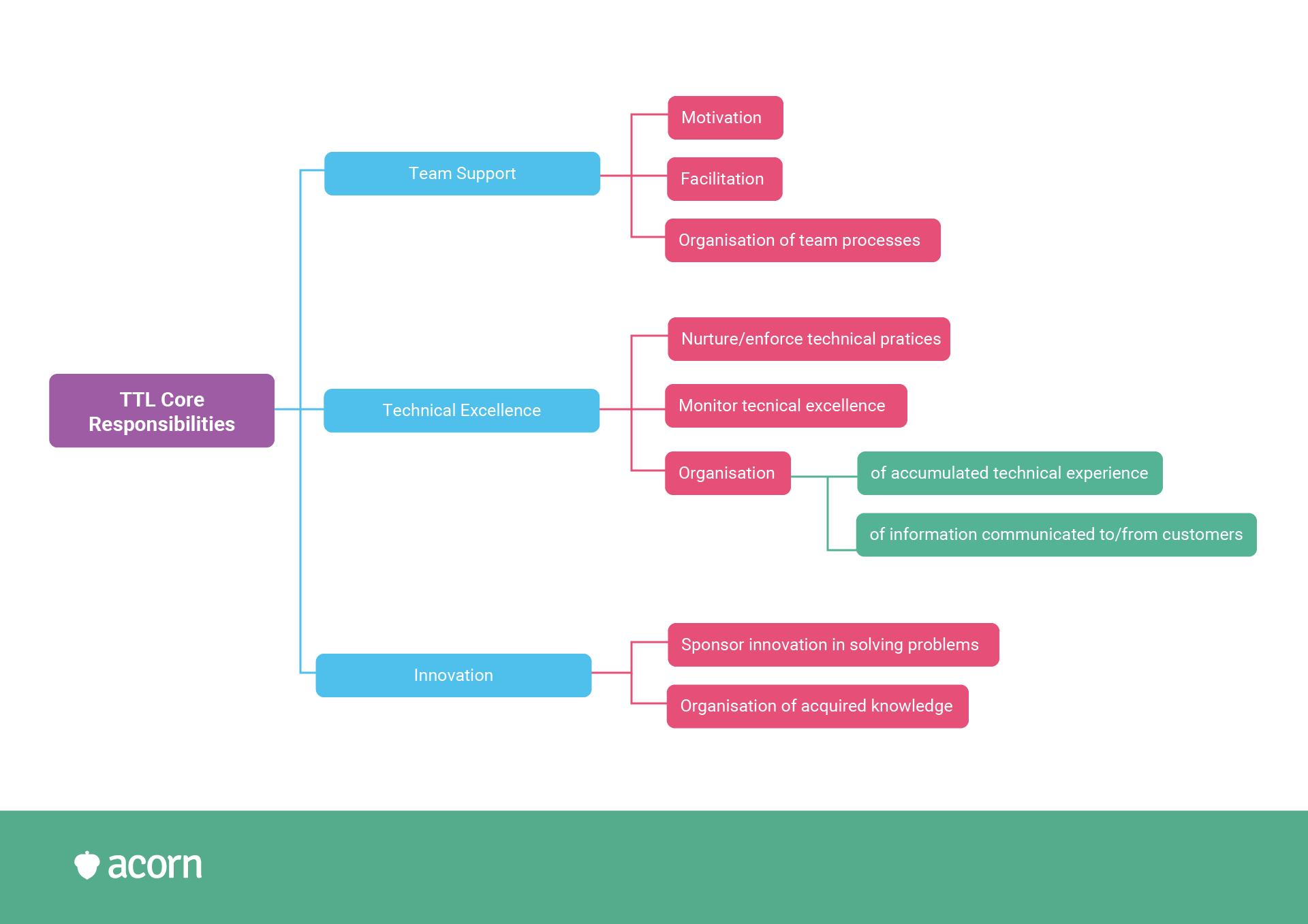
NB: Make sure to include senior developers and engineers in this conversation. One 2021 report found HR lacks the deep understanding of tech skills needed compared to the capabilities most engineers believe are necessary. Fast forward a few years to an uncertain time for tech talent, and organisations are finding they can’t hire to match pace with changing technical skills. Now more than ever, you need to be consistently nurturing internal talent. Including them in the conversation gives you on-the-ground insight into lacking capabilities they see as critical to team culture and productivity.
A neutral ground is a capability framework. IT capability frameworks can help you define tasks from responsibilities, and therefore knowledge gaps to be addressed. Take this example from the Innovation Value Institute—capabilities are expressed in business terms, which helps when you’re calculating the business value of development down the line.
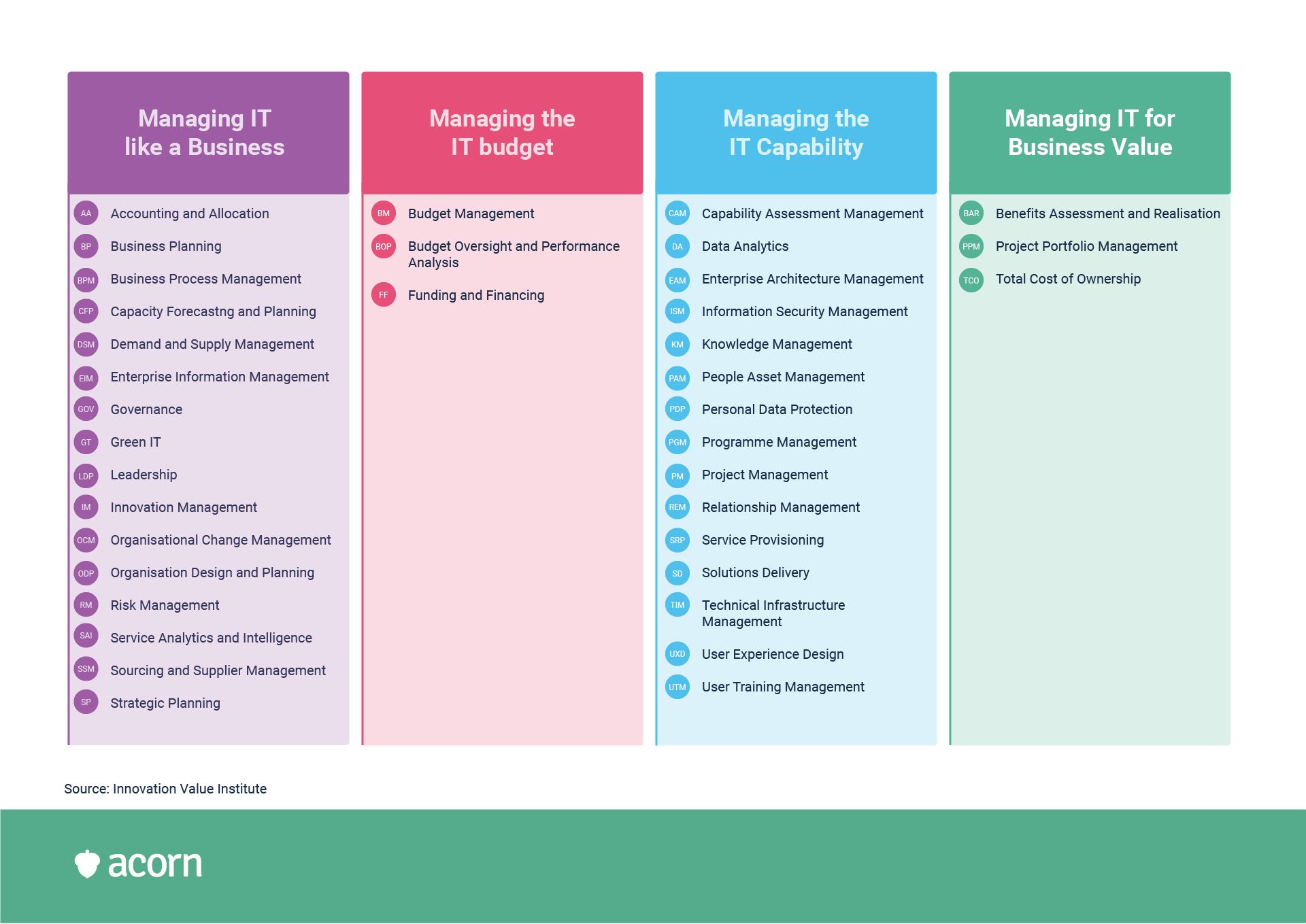
Capability frameworks also give you levels of maturity, which aids in understanding progression and identifying high potential for succession.
The dual career ladder
We’d strongly advise against creating one single track of people management for tech leadership. As with most fields, identifying high potential and high performers in software development usually throws up two distinct career tracks: Professional (high performance) and management (high potential).
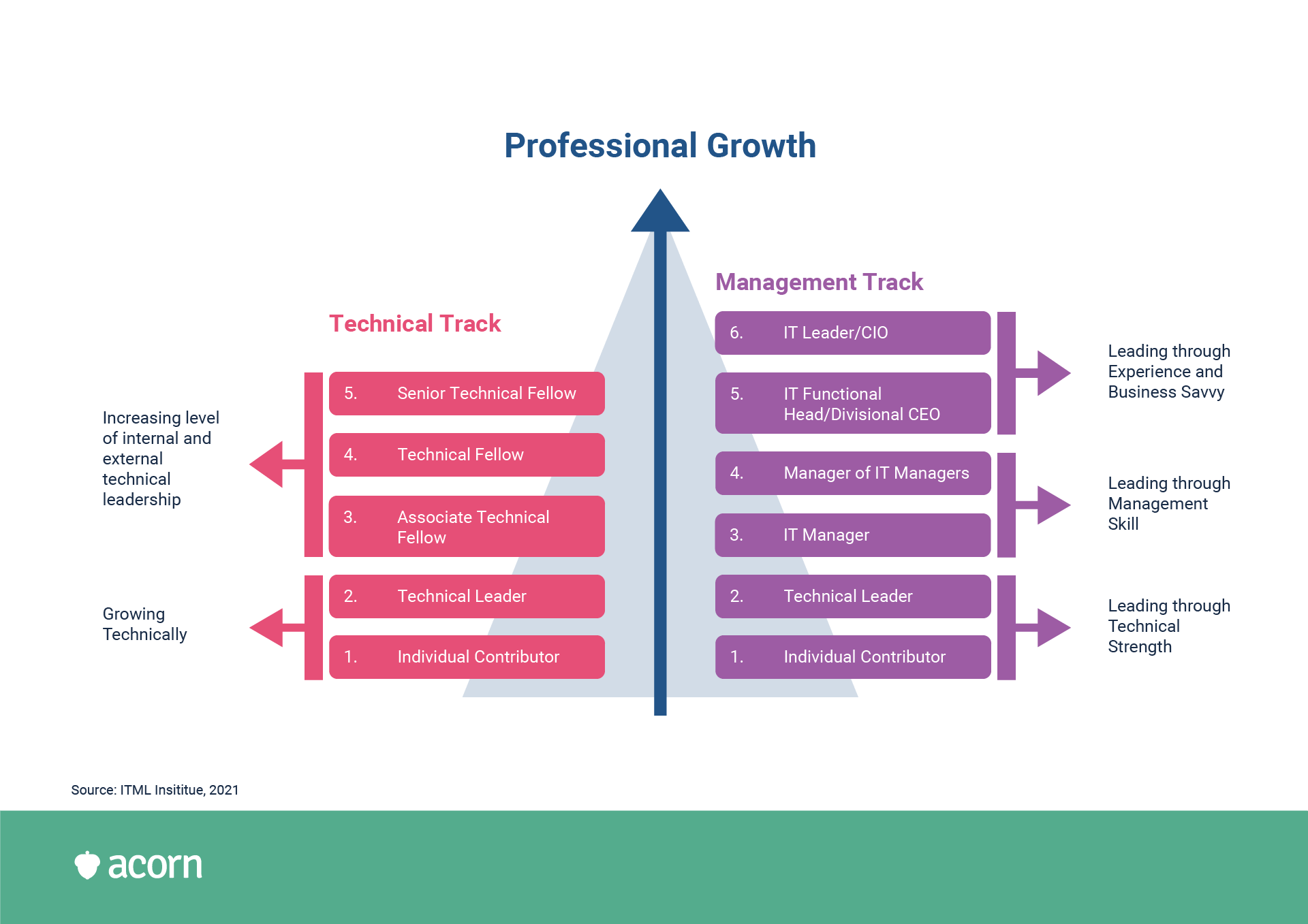
The professional or technical track is usually where subject matter experts emerge. They are incredibly important to the health of your organisational capital while people leadership is crucial to leveraging workforce capability to its full potential. Creating more leadership roles and opportunities for growth allows for talent mobility and better utilises the strengths of high performers who aren’t inclined towards people management.
Provide on-the-job training opportunities
The pace of change in technology is like the speed of light compared to other fields. That means not offering continuous development opportunities puts your organisation behind the eight ball—especially if your leadership ranks don’t have the information needed to design and execute strategy.
The solution is not to throw one-off workshops at them. Not only is it proven that learning effectiveness is linked to post-training enablement, but learning in the flow of work delivers 92% more innovation, 37% more productivity and a 58% boost to future preparedness.
Yet surveys show that developers are generally dissatisfied with the amount of on-the-job training they receive. If they don’t have the information to fix issues as they arise, their codebase is negatively affected. If that’s the centre of your product or service, that means your business is negatively affected, too.
The general theme is that developers want to be challenged, but they’re not being offered challenges. You don’t need to throw out the L&D rulebook. The existing leadership development initiatives in your organisation will work to improve technical and interpersonal skills.
Mentoring
Say you pair a high-performing senior developer with a high-potential junior developer. The former has a chance to flex their communication skills while validating their own technical knowledge, while the latter can be brought onto challenging projects to test their capabilities.
For emerging leaders, it also means they get real-life experience with:
- Task delegation
- Project management
- Emotional labour
- Priority coordination
- Giving constructive criticism.
Project rotations
Alongside mentoring and group work, it’s important to allow for dual mobility. Dreaded knowledge silos can more easily occur in the development cycle, particularly if a software engineer is cloistered in one niche of work. This can create vacuums or echo chambers, which means criticism is harder to give and receive.
Rotations give developers a chance to determine where their interests lie, which only makes for more engaged tech leads—either on the management of literal technical track—down the line.
Why technical leadership development fails
In software engineering, it can be jarring to take on a leadership role and do less of what one is good at: Writing code. Research shows it takes six months to onboard engineers to full productivity.
There are a few ways succession and leadership development can fail for software developers.
- People are promoted based solely technical skills.
- Training to fill gaps comes too late.
- Soft skills aren’t reviewed in performance evaluations or used in ongoing development plans.
- Effective leadership isn’t modelled to software developers.
- Ineffective leadership, as it stands, isn’t corrected, nor are systems of support provided to leaders.
- Business skills are neglected from training, siloing emerging leaders from broader business knowledge.
- Training isn’t tailored to the capability needs of the individual or the goals of the organisation.
- Leadership—and its heavy workload—is pushed upon unwilling candidates, and burnout rises.
Key takeaways
Technical leads must:
- Handle emotional labour
- Act as a knowledge base
- Drive collaboration
- Scrutinise and improve others’ capabilities
- Translate and advocate for end user needs
- Lead tech strategy in line with business needs
- Ensure team progression meets pace of change.
All in all, no small change. And being accountable for others is hard for many new leaders, not just those in software development. That’s before you add in the fact that technology and methodologies iterate, meaning that technical leaders have to balance staying on top of best practices with people management.
Building developer leadership ensures your technical unit has the tools and resources they need to effectively lead not only the software team, but execute your organisation’s digital and technological strategies.
Related Reads on This Topic

Everything You Need to Know About a Project Management Capability Framework
A project management capability framework outlines competencies required for effective project, programme, portfolio management…

Your Guide to Defining and Building IT Capability for Performance
We walk through how to create IT capabilities, as well as the step-by-step process for building IT capability for high performance…

Why Leadership Development Planning is Important and How to Create a Leadership Development Plan
Leadership development planning plays a valuable role in driving better results for your company. Find out why and how to create an effective plan…
